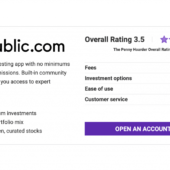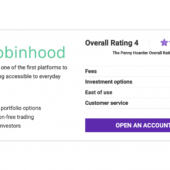by Dana Sitar, CEPF®, Jamie Cattanach
Digital-first financial services are the wave of the future: all of the money management, none of the getting off the couch.
One of the earliest players and a leading company in the branchless banking game is Chime, a financial technology company founded in 2013 by Chris Britt (current CEO) and Ryan King (current CTO).
Like other online banking options, Chime offers many of the most important features of a traditional deposit account with a much leaner fee schedule — and even has a savings account option that bears a much higher interest rate than a typical savings account.
Chime has become increasingly popular even though a summer 2021 controversy has yet to play out. Nearly 1,000 complaints were lodged with the Consumer Financial Protection Bureau after Chime abruptly closed hundreds of accounts. Chime said the closures were related to COVID relief fraud but the issue has not been publicly resolved. Pro Publica reported on the situation in July and The Penny Hoarder is watching for resolution.
In this review conducted in late 2021, we look at both the Chime’s checking and savings accounts, considering the details you will need to decide if you want to sign up. Chime offers one “checking account” option, called the Chime Spending Account. Every Chime member starts with this account.
If you open a Chime Spending Account, you also have access to a Chime Savings Account, an FDIC-insured savings account with automated savings features, high APY and no fees.
Check out our current list of bank promotions for a chance to earn a cash bonus when you sign up for a new bank account.
Unlike some online accounts, Chime doesn’t make it easy to set specific savings goals or to further personalize your accounts by purpose. You also cannot deposit money directly into your Chime Savings Account; it has to be funneled through your Spending Account.
The Chime Savings Account is a federally regulated savings account, so it’s subject to any definitions or restrictions set by the Federal Reserve, including potential withdrawal limitations.
Aside from a simple checking account and savings account, Chime’s offerings are fairly light. It doesn’t offer any lending, credit cards or investing, so you’ll have to work with different institutions to cover those.
It does offer a fairly unique credit builder account connected to the Chime Credit Builder Secured Visa Credit Card.
You can open an account with no credit check and pay no annual fees. You’ll just make a deposit of any amount (no minimum), which becomes your credit limit. You spend on the card like any other Visa credit card and repay the balance with the money in your Credit Builder account, and your activity is reported to credit bureaus to build your credit history.
Chime goes easy on the fees, which means:
You can withdraw cash from more than 38,000 fee-free ATMs in the U.S. through MoneyPass and Visa Plus Alliance ATMs.
You’ll pay the provider’s fee if you use an out-of-network ATM. And you’ll pay a fee to deposit or withdraw cash over the counter at Green Dot locations — Chime charges $2.50 for withdrawals, and you may pay a Green Dot fee, which could be up to $4.95 per transaction.
As with all online bank accounts, Chime’s convenience factor is relative: If you’re looking for the brick-and-mortar banking experience, you’re barking up the wrong (money) tree.
Because Chime is a technology company, its mobile app is easy to use and lets you manage your money on the go 24/7. If that’s what you’re looking for, Chime makes the grade for online savings accounts and savings accounts.
It also includes some features you won’t see from many of its online-banking competitors, including cash deposits, free overdraft protection and early paycheck deposit.
Chime enjoys high ratings on both the Google Play Store and Apple’s App Store — 4.6 and 4.8 stars out of five, respectively.
The app makes it easy to access and interact with all of Chime’s banking features, including SpotMe overdraft protection, automatic savings options and easy mobile payments, which are made particularly simple for transactions between Chime users.
Through the app, you can:
The app doesn’t carry the wealth of extra features some other digital-first banks offer. Budgeting tools, for example, are a helpful way to reframe your finances, and banks of all types are increasingly working them into their suite of digital tools.
Chime, on the other hand, remains simplistic — which you might take as a positive or negative, depending on what you’re looking for.
Chime’s suite of offerings and in-app tools are pretty lean, but could be a fit for you if you have relatively simple banking needs. Here’s our take on the best things and the not-so-best things about opening a Chime account.
We’ve rounded up the pros and cons of Chime to help you decide if this is the right bank for you.
Here are our answers to some commonly asked questions about banking with Chime.
Dana Sitar (@danasitar) has been writing and editing since 2011, covering personal finance, careers and digital media. Information from former Penny Hoarder contributor Jamie Cattanach is included in this report.
Ready to stop worrying about money?
Get the Penny Hoarder Daily
Privacy Policy
© 2021 The Penny Hoarder. – All rights reserved.
Privacy Policy and Terms of Service | Do Not Sell My Personal Information | Cookies Settings






